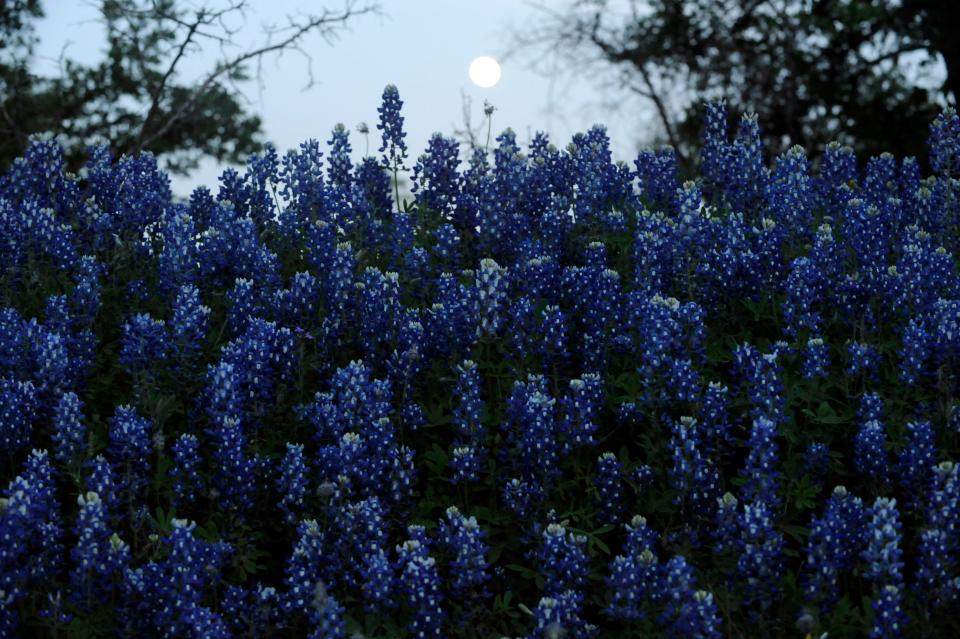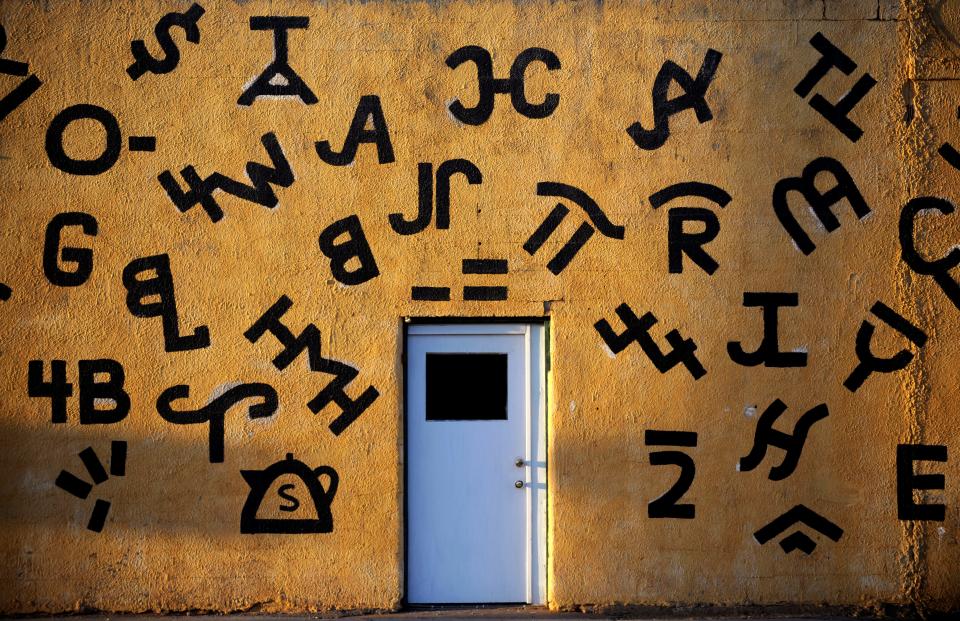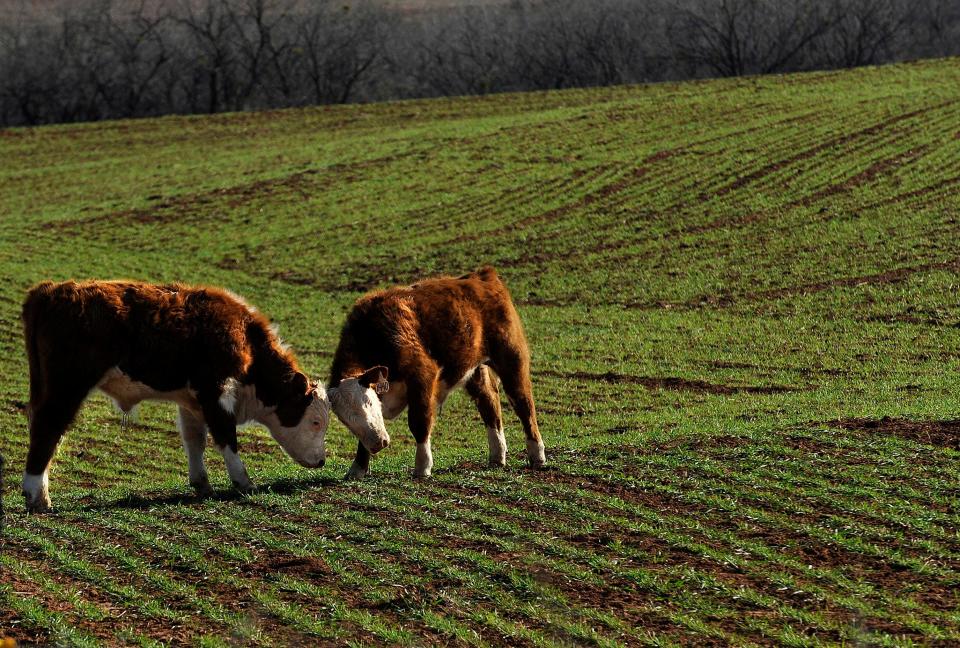Daylight Saving Time: We still fall back on setting time to spring forward
- Oops!Something went wrong.Please try again later.
Daylight Saving Time has taken its toll on us all, force-marching us into the dreaded "springing forward."
Already, we're desperately awaiting the time we can finally "fall back."
We all know who's to blame, right?
Farmers.
Or maybe Benjamin Franklin.
But most likely farmers.
Except none of that is true.
We'll explain. But first ...
What is DST?
Daylight Saving Time is a pain, one that flares up in the United States every year on the second Sunday in March, according to timeanddate.com, source of much of the history to follow.
At 2 a.m., clocks are to shift forward an hour.
That small change makes sunrise and sunset about an hour later than it would be.
Initially, morning commutes that had been trending toward brightening, will be darker again. As the days grow longer, that will change.
But immediately, there will be more evening light.
Get ready for Daylight Saving: When DST begins, change your smoke alarm battery
On Nov. 6, again at 2 a.m., time turned back one hour. giving us more light on (presumably) cold winter mornings.
Of the country's states and federal districts, 49 observe Daylight Saving Time completely, while one — Hawaii — doesn't and another — Arizona — has portions that do and others that don't.
In the latter, most of the state observes Mountain Standard Time year-round, except the Navajo Nation, with territory extending into Utah and New Mexico, both states that observe Daylight Saving Time.
Even as recently as 2021, Texas legislators have kicked around the concept of doing away with Daylight Saving Time, making time universal throughout the state.
But apparently, time ran out.
A brief(ish) history
The idea of shifting schedules in a manner similar to Daylight Saving Time can be traced to ancient times.
Devices such as Roman water clocks, for example, used different scales for certain months of the year to adjust daily schedules to solar time.

New Zealand scientist George Vernon Hudson and British builder William Willett are credited with the modern idea, which is often misattributed to Franklin.
Franklin somewhat satirically suggested in "An Economical Project for Diminishing the Cost of Light," published in the Journal of Paris in 1784, that Parisians should change their sleep schedules to save money on candles and lamp oil.
Some people, apparently, didn't get the joke.
Hudson in 1895 presented a paper proposing a two-hour shift forward in October and a two-hour shift back in March.
In 1905, Willett suggested setting clocks ahead by 20 minutes each of the four Sundays in April, switching them back by the same amount on each of the four Sundays in September.
Those darned Germans (or, blame Canada?)
Willet's plan earned some interest from the House of Commons in Parliament , but many opposed the idea — including, it must be noted, farmers.
Hold that thought.
Germany and Austria were the first countries to adopt Daylight Saving Time in 1916, but a few hundred Canadians actually beat them in 1908, according to timeanddate.com, when residents of Port Arthur, Ontario, aka Thunder Bay, turned their clocks forward an hour.
The switch was at the prompting of local businessman John Hewitson, who reportedly wanted to enjoy an extra hour of summer sun.
Other Canadian locales soon fell in line.
The idea didn't go global, though, until Germany introduced it in 1916.
On April 30, 1916, two years into World War I, clocks were turned ahead an hour in an effort to minimize use of artificial lights to save fuel.
Within a few weeks, France, the United Kingdom, and many other countries adopted the notion.
Most countries later reverted to Standard Time until World War II brought Daylight Saving Time back to most of Europe.
'Fast time(s)' in the USA
The United States first observed Daylight Saving Time in 1918.
Called "Fast Time," the initiative was sparked by Robert Garland, a Pittsburgh industrialist who had encountered the idea in the United Kingdom.
It was repealed seven months later, some might argue as God intended, though some cities — Pittsburgh, Boston and New York — kept it.
It was reintroduced in World War II in 1942, when President Franklin D. Roosevelt instituted a year-round DST known as "War Time."
That lasted from Feb. 9, 1942, to Sept. 30, 1945.
The normal time zones even "participated" in the war effort, sort of, by adding "War Time" to their names — Eastern War Time, Mountain War Time, Central War Time, etc.
After the surrender of Japan in mid-August 1945, the time zones were relabeled again, this time called "Peace Time."
Perhaps we could use more "Peace Time" right about now.
No rules, just rights
From 1945-66, there were no uniform rules for Daylight Saving Time in the United States, causing widespread confusion in transport and in broadcasting.
The Uniform Time Act of 1966 granted states the opportunity to opt out, while providing a framework for a nationwide DST schedule starting on the last Sunday of April and ending on the last Sunday of October.
Following the 1973 oil embargo, Congress extended the period to 10 months in 1974 and eight months in 1975 in an attempt to save energy.
The rationale was to study the effects of a seasonal time change on energy consumption.

The measure earned staunch opposition and was found to only yield modest savings. It was amended to allow a return to standard time in the winter months.
Following the energy crisis, the schedule was revised several times.
From 1987-2006, the country observed Daylight Saving Time for about seven months each year.
The current schedule was introduced by the Energy Policy Act of 2005 and has been in place since 2007.
Stop blaming farmers
So, what we're trying to say is:
Sorry, you can't blame farmers for your dread of Monday's alarm, when it will feel like it's 5 a.m. when you awake at 6.
Actually, as indicated, farmers often hated DST, too.
"They were opposed to it," said Steve Estes, the Texas A&M Agrilife Extension agent for Taylor County.
According to History.com, American farmers "did not lobby for (DST) to have more time to work in the fields," as some believe.
Just like farmers who spoke against it in Europe, "the agriculture industry was deeply opposed to the time switch," the site says.
And agrarian interests led the fight for the 1919 repeal of national Daylight Saving Time.
Those working in agriculture will tend to use daylight to their advantage, Estes said.
“They’re going to go by sunrise to sunset,” he said, unlike much of the workaday world that goes off whatever a clock shows.

Shifting hours
The advent of modern technology has shifted when farmers can work some, Estes said.
Tractors and equipment now have better lighting systems, which allows nighttime work — or early morning work — if needed.
Ranchers may have a different experience, he said, since caring for livestock still requires natural daylight.
But those owners will "just shift their schedules," he said, as has been common, instead of fumbling in the dark.
Where DST does affect farmers is potentially in interaction with the 9-5 world, Estes said.
If they need to go to the bank or the parts store, for example, they may have to shift their work schedule around, since when stores are open or closed may not ideally match up.

Those who farm or ranch part time might see some benefit in having extended evening hours to work, Estes speculated.
"We're seeing more folks that have a smaller farm or ranch operation," he said. "They're involved in agriculture, but they also have a day job in town, if you will."
Estes said he could see the practice benefitting them, since they could use the "extra" daylight in the evening to go home and tend to their on-the-side agricultural duties.
Estes, who grew up in a farming and ranching family himself, said the sun not setting until after 9:30 p.m. some days made them feel endless — and meant dinner was often eaten “really late at night.”
“I was always kind of opposed to it at the time, too, because it felt like the days were so long,” he said. “... But as long as there was light out, we were going to be doing something.”
Does a body ... bad?
There has to be some benefit to DST, right? Maybe in health?
Well ...
DST actually has been shown to create havoc with body clocks and trigger underlying health issues, causing changes in circadian rhythm.
A 2019 survey conducted by the American Academy of Sleep Medicine found more than half of Americans said they felt tired after springtime's DST changes, causing to organization to later call for the practice to be abolished.
Writing in the Journal of Clinical Sleep Medicine in 2020, the academy said seasonal changes should be done away with "in favor of a fixed, national, year-round standard time."
According to the position paper's abstract, "an abundance of accumulated evidence indicates that the acute transition from standard time to daylight saving time incurs significant public health and safety risks, including increased risk of adverse cardiovascular events, mood disorders and motor vehicle crashes."
The paper said chronic effects of remaining in in Daylight Saving Time year-round have not been well-studied.
But "due to the impacts of the delayed natural light/dark cycle on human activity, (DST) could result in circadian misalignment, which has been associated in some studies with increased cardiovascular disease risk, metabolic syndrome and other health risks," the statement said.
Maybe we should all just stay in bed.
Brian Bethel covers city and county government and general news for the Abilene Reporter-News. If you appreciate locally driven news, you can support local journalists with a digital subscription to ReporterNews.com.
This article originally appeared on Abilene Reporter-News: Daylight Saving Time 2022: Falling back on plan to spring forward

